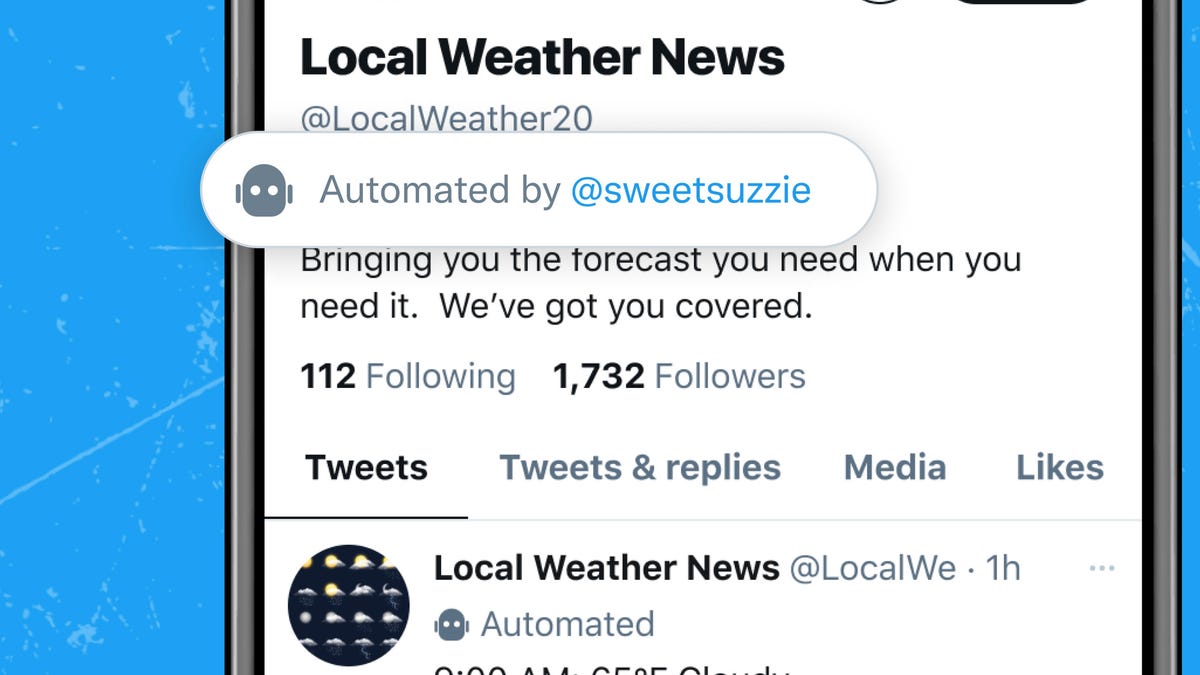Twitter feature labels 'good bots' that send automated tweets
A robot icon identifies automated accounts so they won't be taken for human-helmed ones. The focus is on potentially helpful bots. Bad bots? Twitter says it's "proactively sniffing them out."

The robot icon lets you know an account is automated.
Twitter is trying to make it easier for you to differentiate between bots and humans. The social media service recently introduced a feature that'll allow a profile to identify its associated account as automated, or driven by a bot. The label will appear on both the account's profile and on the individual tweets sent from that account, and it'll link you to the bot developer's official Twitter account.
Bot-driven accounts such as these often provide useful and important information, like when an earthquake strikes, or they simply help out, whether you're trying to download a video or be reminded of a tweet later on. There's even a bot that constantly tweets out words from The New York Times that the newspaper hadn't printed before.
The labeling feature, which started rolling out last month, won't do much to prevent harmful bots from spreading spam or misinformation in your timeline, however.
Not all automated accounts are helpful, Twitter Safety said in a series of tweets, and when it comes to "spammy, deceitful" bots, the company is "proactively sniffing them out" with assistance from machine learning and "a forensic team of investigators." Twitter Safety also said users can help by reporting suspect accounts, and it provided a list of tips.
Twitter has been under fire in the past for its rampant bot problem. In 2016, the United States government and law enforcement agencies investigated Russia's use of bots to spread misinformation on Twitter during the US presidential election that year.

